
Indian has finally revealed details of its production street tracker, the FTR 1200—the most hotly anticipated bike launch of recent months.
The good news is that the FTR 1200 sticks fairly close to the styling lineage of the all-conquering FTR750 flat track racer, and the FTR1200 Custom concept bike we reported on last November.
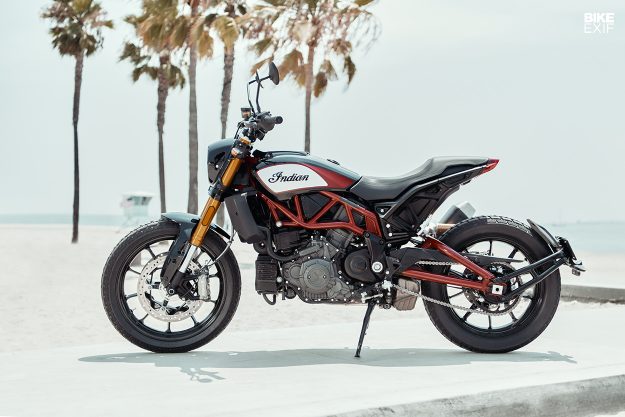
There’s a new 1203 cc engine that pumps out 120 hp, an under-seat tank for mass centralization, and a trellis-style steel mainframe with an aluminum rear subframe.
The biggest visual difference is the exhaust system. Rather using high pipes with a hidden run down to a catalytic converter box, à la Triumph’s Street Scrambler, it’s a more conventional 2-1-2 setup with twin large mufflers. (High and low Akrapovič slip-ons will be available as aftermarket bolt-ons.)
To dig deeper than the standard PR, we put some questions to Indian VP Grant Bester, and also to Ola Stenegärd (below), the former BMW designer who joined Indian as Director of Product Design .
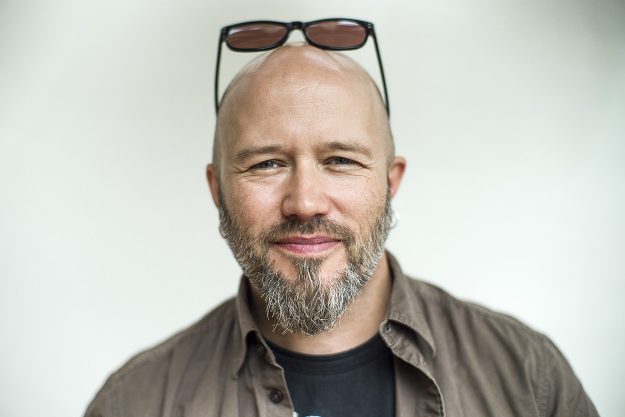
How ‘ready’ was the production FTR 1200 when the prototype was revealed? How much impact did the public’s response have on whether the FTR was going to go into production?
Ola When the FTR1200 Custom was shown, the production bike was eating up miles on the test track. It was 95% finished, I would say.
Yet we are very ‘open’ in the last months before production. Feedback on both the visuals and riding experience was being updated very close to production. I would say this is quite normal anywhere in the motorcycle industry.
Of course, you don’t change the ‘big strokes’ a week before start of production. But fine-tuning is something that goes on almost until the bikes start rolling off the band.

Obviously there are some differences from the original prototype (above): 19/18 wheels rather than 19/19, a lower slung exhaust, and so on. How do you translate a flat track prototype into an actual road going motorcycle that meets homologation standards in multiple countries? What are some of the challenges here?
Ola I think you just mentioned some of them, especially the exhaust. This is always tricky to navigate in an ever-hardening legal environment. Yet I think the FTR team did a fantastic job on the exhaust.
Other tricky things are the normal stuff: mirrors, lamps, turn lights and license plate. And finding space for a decent amount of fuel and an acceptable passenger seat. These are realities of everyday life.
But coming in fresh and knowing how incredibly hard it is to cover those points—and make them look good—the FTR team knocked it out of the park!
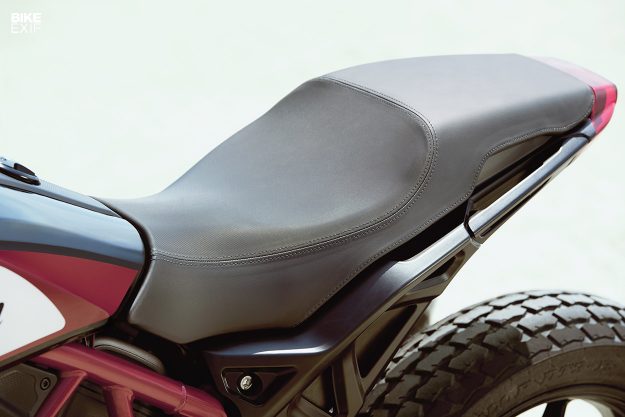
Grant The challenge was retaining the form with everything larger in almost every way. An example is using an under-seat fuel tank to retain the flat track profile and lines. The tire choice of F19/R18 gives the flat track look but for practical reasons, for the owner, 18-inch rear tires are easy to find.
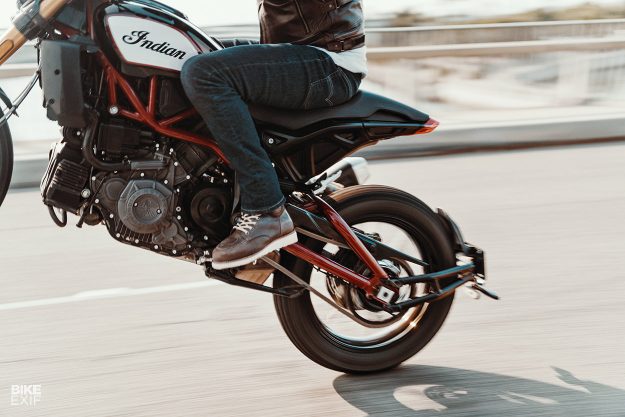
Can we expect to see more non-traditional bikes from Indian? Perhaps a scrambler, cafe racer or adventure bike?
Grant The FTR platform gives us the opportunity to expand into segments where we currently don’t participate. Any future model would have to be the right fit for the brand and compelling to the consumer.
Ola It’s developed as a very versatile base. It could spin off in other directions too. That’s what makes this whole launch so exciting for us. It’s a game-changer for Indian Motorcycle.
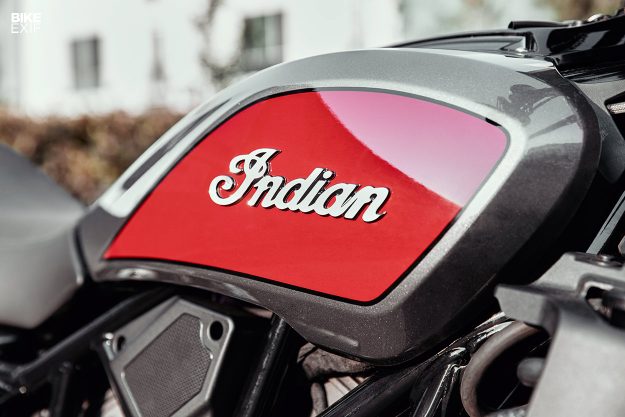
What other models can we expect to see the new 1203 cc engine in?
Ola Right now, the launch of the FTR1200 has our full attention. Launching a complete new platform is always hard work. Once that is done and locked down, we will turn our attention to which derivatives would make sense. Are we excited? Hell yeah!
Launching the FTR 1200 at INTERMOT in Germany seems to indicate a bigger focus on European markets than before?
Grant The ‘pre-introduction’ of the FTR1200 Custom at EICMA in Italy last year drew tens of thousands of comments from consumers, asking us to build a street version they could own and ride.
The sentiment around the FTR750 and the FTR1200 Custom has been overwhelmingly positive, which reassured us that this would be a very exciting international project—and a bike really relevant for Europe.
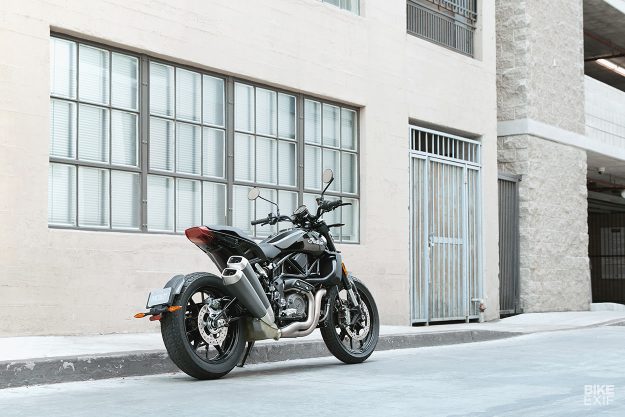
Ola Indian is growing fast, and focusing on the global market is a big part of the strategy, yes. Of course, the cruiser lineup also speaks to global and European cruiser customers—but the FTR 1200 targets a much wider spectrum of customers, especially in Europe.
The bike will feel right at home with the naked classics at Wheels and Waves or Glemseck 101, as well as tearing up alpine roads with a bunch of naked sportbikes. It trips a lot of triggers. It has performance, it can brake and it turns.
![]()
Indian clearly feels the tracker trend is strong right now? What do you think the next trend will be?
Ola The flat track trend is really growing, and we’ve just started to scratch the surface in my opinion.
It’s been there, bubbling under the surface kinda, fuelled by Sideburn magazine and grassroots races like Super Hooligan [USA], Dirt Quake [UK] and El Rollo [Spain]. But now it’s broken through into the limelight for real.
We also supported the sport by creating a factory racing team around the FTR750. I think this really boosted the focus on pro series flat track again, especially in the USA. But Roland Sands’ Super Hooligan series has also put the spotlight back on this phenomenal art of racing.
What the next trend will be? Haha—even if I knew, I would never tell you!
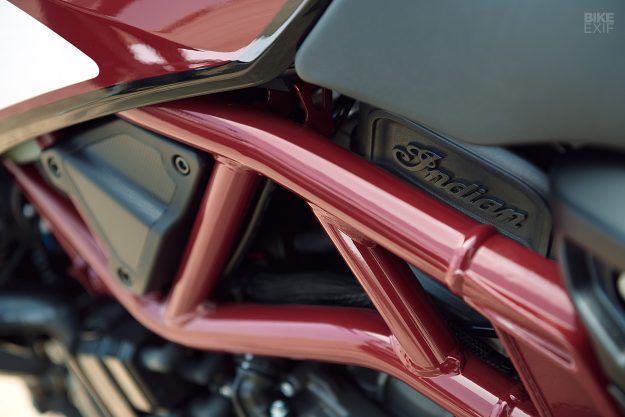
Grant Right now, we are focused on the tracker segment and believe this will grow over the years. The history of the company has many pages dedicated to racing, endurance events and performance events. And naturally, when we re-entered flat track racing, we felt like we were going back to our roots.
The sport drives a lot of passion and interest and is growing fast internationally. We don’t see the FTR 1200 as a bike for someone new to motorcycling, but we do believe the bike will expand the range of global riders interested in Indian Motorcycle.
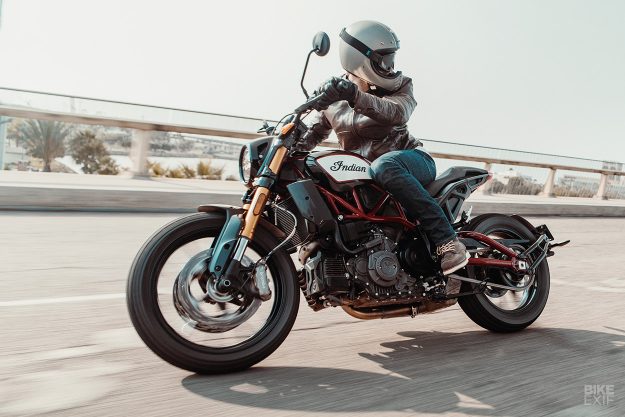
Which brand, or even bike, do you see as the FTR 1200’s competition?
Grant There were no brands or bikes targeted during the process. With the FTR 1200 we wanted to create a pure riding experience, bringing the spirit of the flat tracker to the street.
This is a unique offering and is unlike anything else you’ve ridden. There are no benchmarks, because there aren’t any flat track bikes for the street available. The FTR 1200 is the first.
We rode other bikes of a similar engine size, but more for the intangibles of how the bike feels, and to compare the character of our bike vs. the others. We wanted to see how a FTR 1200 feels as a distinct style of bike on the street.

Ola Indian is a brand with a strong heritage in racing and performance. I truly believe that the FTR 1200 is the first bike from us that really embodies this. It’s a great mix of American history, performance, style and attitude. And it’s the first in a new breed of motorcycles.
Not just for us, but also for the motorcycle industry. Some have tried before, but not so uncompromisingly and so all balls-out as the FTR.
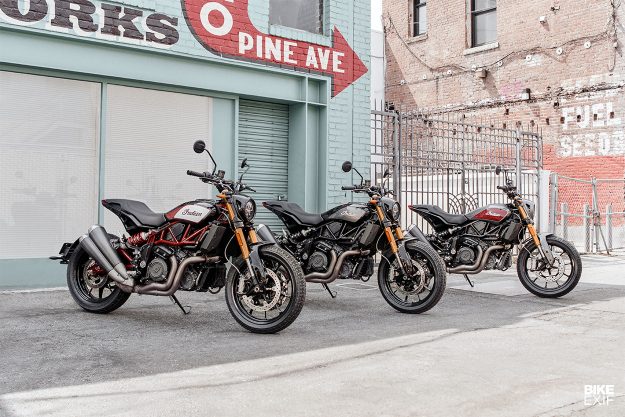
We say: Indian might be onto something here. Launches that generate this level of interest only come along every two years or so: there was the BMW R nineT in 2014, and the new Triumph Bonneville range in 2016.
All that remains to be seen is whether the interest will translate into sales when the FTR 1200 hits showrooms. It’ll be the only mainstream American-made performance bike on sale—and it’ll have a head start of about a year before the Harley-Davidson Streetfighter is launched in 2020.
Who’s tempted?
Indian Motorcycle | Facebook | Instagram
